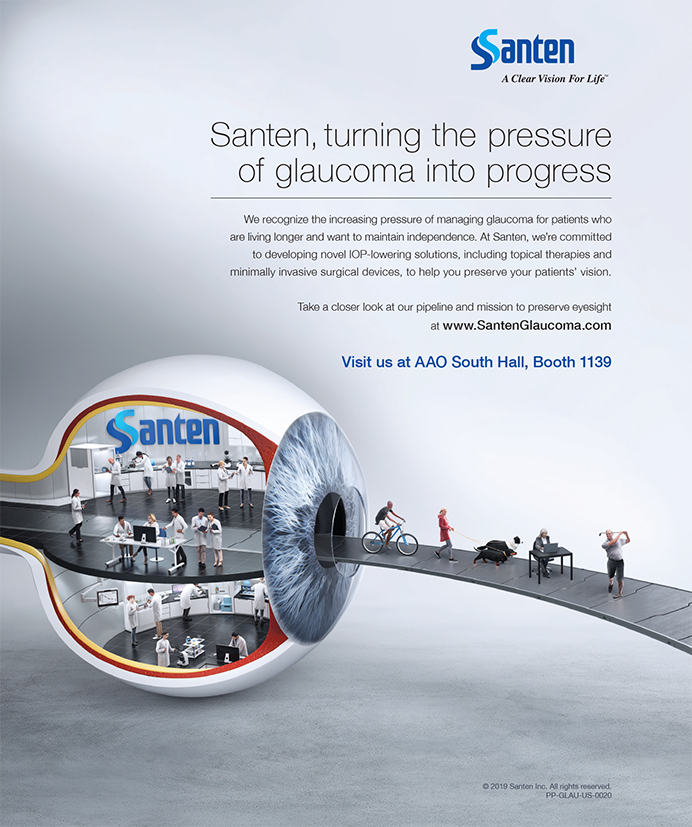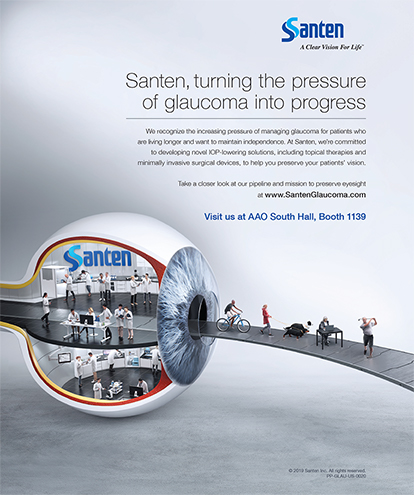Refractive surgery has made great strides over the past 25 years, including constant evolution of the technologies and techniques. Because we have many choices to offer our patients today in the world of laser eye correction, it is important to have a strong foundation of knowledge of these procedures to help facilitate discussions and decisions about surgery with our patients.
Approved by the FDA in 1995, PRK was the first corrective eye surgery in which a laser rather than a blade was used to remove corneal tissue.1 By 1996, LASIK was approved by the FDA; in this procedure, the creation of a corneal flap with a microkeratome was combined with tissue ablation using the excimer laser.2 By 2003, the femtosecond laser had arrived to replace the blade used for flap creation. Options for myopic patients have since expanded with the introduction of the small-incision lenticule extraction (SMILE) procedure, approved by the FDA in 2016 to be performed with the VisuMax femtosecond laser system (Carl Zeiss Meditec).3
SURGICAL TECHNIQUES
The surgical techniques and the lasers employed differ greatly among the three procedures. In LASIK, both femtosecond and excimer lasers are commonly used.2 In some practices, flaps are still created with a microkeratome or blade technique, but since 2003 many centers have moved to femtosecond flap creation because of reduced variability, side effects, and complication rates associated with the blade technique. After flap creation with a femtosecond laser, the flap is displaced by the surgeon and the patient is moved to the excimer laser, which is used to perform the corneal reshaping.2 The epithelium remains attached, and the flap is put back into place once the ablation is complete. The patient is then sent home with a topical antibiotic and steroid.
In contrast to LASIK, there is no flap creation in PRK; only the excimer laser is used.1 In most instances, the surgeon first removes the epithelium completely, and then the patient undergoes corneal reshaping with the excimer laser. Mitomycin C is routinely applied to the cornea to prevent the development of significant postoperative scarring or haze, and, because the patient is left with a sizable corneal abrasion, a bandage contact lens is typically placed and kept on for several days until the abrasion heals.1 The patient is sent home with topical antibiotic, steroid, and typically a nonsteroidal antiinflammatory drug.
SMILE is performed with the femtosecond laser only; the excimer laser is not used. In this procedure, the femtosecond laser first creates a small lens-shaped bit of tissue (lenticule) within the cornea.3 The same laser then creates a small arc-shaped incision, typically less than 4 mm long, on the surface of the cornea, and the surgeon extracts the lenticule of tissue through that incision. Removal of the lenticule and collapse of the overlying corneal tissue are what cause the change in refraction.3
SMILE is currently used to treat up to -10.00 D of myopia and up to 3.00 D of astigmatism with a maximum manifest refraction spherical equivalent of -10.00 D.4 LASIK and PRK are routinely used to correct hyperopia, myopia, and astigmatism. LASIK and PRK can now also be used to treat higher-order aberrations, whereas SMILE cannot. In fact, SMILE can, to some degree, increase higher-order aberrations.5
CHOOSING A PROCEDURE
Once a patient has decided to consider a refractive surgical procedure, the choice of which procedure would be best is multifactorial. In choosing which procedure is right for your patient, it is important to take into account the full ocular health of the patient, including the ocular surface health, corneal topography and integrity, and vitreoretinal health.
Corneal parameters should fall into a range that the surgeon will feel comfortable with. In general, each surgeon has a different comfort level depending on experience and training. LASIK and SMILE have nearly identical criteria.3 PRK is generally reserved for those with thin corneal pachymetry readings (<500 µm).1
A good rule of thumb to follow is that the patient should be left with a stromal bed of greater than 300 µm and keratometry (K) readings within the range of 37.00 D to 49.00 D.6 A typical LASIK flap today is 120 µm thick, and for every diopter of refractive correction performed, the laser removes about 20 µm of stromal tissue and changes the Ks by a 1:1 ratio.6
Most surgery centers use corneal imaging systems that capture the posterior topography of the cornea as well as the anterior surface. At our center, we use the Pentacam (Oculus Optikgeräte), but there are other instruments that provide similar information, such as the Gallilei (Ziemer Ophthamic Systems). This type of imaging has the ability to reveal early or subclinical keratoconus that may be undetectable with other types of topography. If the patient’s corneal thickness is less than 500 µm or there are subtle irregularities on corneal topography, we tend to discuss PRK rather than LASIK.6
BEFORE SURGERY
Ocular surface disease should be treated before any refractive surgery, as it can lead to a sterile inflammatory response at the edge of the LASIK flap if it is not addressed prior to refractive surgery.3 It is important to look for and treat these conditions preoperatively in order to avoid unhappy patients postoperatively.
Patients’ motivation and expectations are just as important as our technical measurements. Many people are great candidates based on all of their testing, but, when it comes to their expectations, current surgical procedures may not meet their standards. It is important that patients have realistic expectations regarding the surgery itself and the healing process. A thorough informed consent process is a vital part of gauging and properly setting patients’ expectations.
DURING AND AFTER SURGERY
During refractive surgical procedures, patients will typically feel a little bit of pressure and discomfort. After the procedure, recovery varies among the different types of treatments. LASIK patients typically notice a difference immediately after the procedure. PRK and SMILE patients may take a few months to fully recover.1,6
After PRK, patients have bandage contact lenses in place as the epithelium heals.1 Their vision will be blurry at first and will slowly improve over about a month depending on several factors. Patients generally see clearly right after LASIK and generally heal more quickly than they would after PRK.2
Patients also recover more slowly after SMILE than after LASIK. In the clinical trial data that supported FDA approval of SMILE, no eyes achieved 20/40 or better VA immediately after the procedure, but by the 6-month mark more than 99% of patients were seeing 20/40 or better, and 87% were 20/20 or better.3
ENHANCEMENTS
If there is unwanted refractive error after LASIK, the surgeon can in most cases relift the flap to perform additional excimer laser treatment.6 PRK can also be performed over a LASIK flap or a previous PRK treatment.6 If there is residual refractive error that requires treatment after SMILE, it can be corrected with PRK; additional SMILE is not an option.3
With each of these options for enhancement, the patient must wait a minimum of 3 months, possibly longer with higher corrections.2
SIDE EFFECTS, COMPLICATIONS
All of the corneal laser procedures have side effects that can include decreased contrast sensitivity, halos and glare, symptomatic dry eye, and discomfort. Typically, by 6 months postoperatively these have diminished for the most part, and they are fairly equivalent across the procedures.2
Theoretically, SMILE is supposed to induce less dry eye than LASIK because fewer corneal nerves are cut, but we have seen diminishing issues with this side effect in LASIK with the evolution of flap creation.3
Complications are different but comparable among the three procedures.
LASIK flap complications include buttonhole flaps, epithelial ingrowth, corneal striae and folds, diffuse lamellar keratitis, interface fluid, and ectasia. PRK complications can include reepithelialization issues, sterile infiltrates, haze, and regression.1 SMILE can have lenticule complications, such as a residual or torn lenticule that can dramatically affect postoperative vision. There can also be epithelial ingrowth, which for the most part is treatable.3
SMILE has a slightly smaller margin of error than LASIK. It is not an excimer procedure, and the femtosecond laser system does not utilize autocentration or registration. If the dock is decentered, the lenticule can be decentered, causing optical issues that are not simple to correct.3
EDUCATE YOURSELF, THEN YOUR PATIENTS
The evolution of refractive surgery options is a journey that will continue. At this time, there are many options available for our patients. Having a basic understanding of the similarities and differences in the procedures, and sharing that knowledge with your patients, is helpful in facilitating decision-making.
- Naderi M, Ghadamgahi S, Jadidi K. Photorefractive keratectomy (PRK) is safe and effective for patients with myopia and thin corneas. Med Hypothesis Discov Innov Ophthalmol. 2016;5(2):58-62.
- Tanzer DJ, Brunstetter T, Zeber R. Laser in situ keratomileusis in United States naval aviators. J Cataract Refract Surg. 2013;39(7):1047-1058.
- Xu Y, Yang Y. Dry eye after small incision lenticule extraction and LASIK for myopia. J Refract Surg. 2014;30(3):186-190
- Walter KA, Stevenson AW. Effect of environmental factors on myopic LASIK enhancement rates. J Cataract Refract Surg. 2004;30(4):798-803.
- Zeiss ReLEx SMILE. Carl Zeiss Meditec. www.zeiss.com/meditec/us/products/ophthalmology-optometry/laser-vision-correction/laser-treatment/femtosecond-laser-solutions/fda-approved-zeiss-relex-smile.html. Accessed August 7, 2019.
- Denoyer A, Landman E, Trinh L, Faure JF, Auclin F, Baudouin C. Dry eye disease after refractive surgery: comparative outcomes of small incision lenticule extraction versus LASIK. Ophthalmology. 2015;122(4):669-676.






